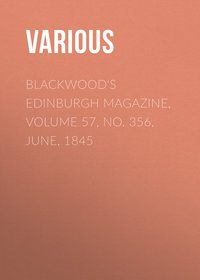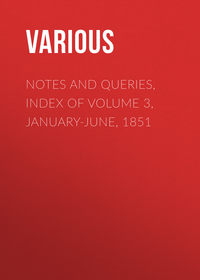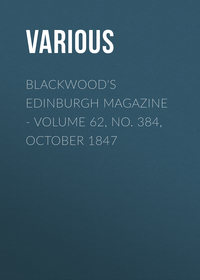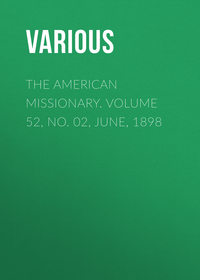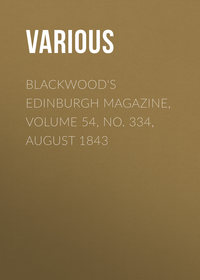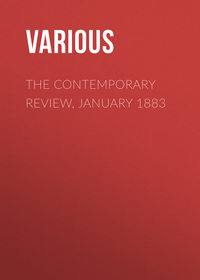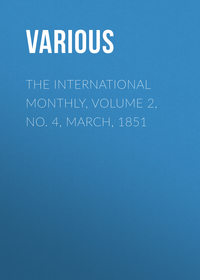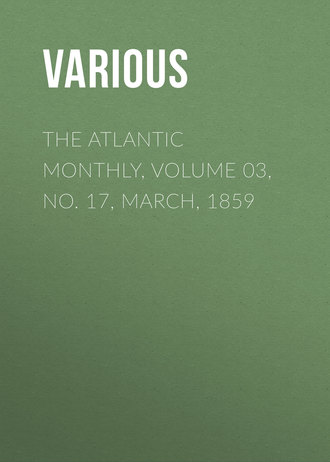 полная версия
полная версияThe Atlantic Monthly, Volume 03, No. 17, March, 1859
The Great Day of Atonement, or Meditations and Prayers, etc., etc.
Translated from the German of Charlotte Elizabeth Nebelin, Edited by Mrs. Colin McKenzie. Boston. Gould & Lincoln. 12mo. 75 cts.
Pope or President? Startling Disclosures of Romanism as Revealed by its own Writers. Facts for Americans. New York. R.L. Delisser. 12mo. $1.00.
The Stratford Gallery, or the Shakspeare Sisterhood; comprising Forty-five Ideal Portraits. Described by Henrietta Lee Palmer.
Illustrated. New York. D. Appleton & Co. 8vo. morocco. $12.00.
A Gallery of Famous English and American Poets, with an Introductory Essay. By Henry Coppee, A.M. Richly Illustrated. Philadelphia. E.H.
Butler & Co. 8vo. morocco. $12.00.
Women of Beauty and Heroism. From Semiramis to Eugénie. A Portrait Gallery of Female Loveliness, Achievement, and Influence. Illustrated with Nineteen Engravings on Steel. By Frank B. Goodrich. New York. Derby & Jackson. 8vo. morocco. $12.00.
Wild Sports in the Far West. By Frederick Gerstaecker. Translated from the German. Boston. Crosby, Nichols, & Co. 12mo. $1.00.
Our Charley, and What shall we Do with Him? By Mrs. H.B. Stowe. Boston.
Phillips, Sampson, & Co. 16mo. 50 cts.
The Mathematical Monthly. Edited by J. D. Runkle. For December and January. Cambridge. John Bartlett. 2 Nos. 4to. 25 cts. each.
Sylvan Holt's Daughter. By Holme Lee. New York. Harper & Brothers. 12mo. $1.00.
An Account of Donati's Comet of 1858. By George P. Bond. Extracted from the Mathematical Monthly. Cambridge. John Bartlett. 4to. 50 cts.
What will He Do with It? By Pisistratus Caxton. A Novel. By Sir E.
Bulwer Lytton, Bart. New York. Harper & Brothers. 8vo. $1.00.
The Comedies of Terence. Literally Translated into English Prose, with Notes. By Henry Thomas Riley, B.A. To which is added the Blank Verse Translation of George Colman. New York. Harper & Brothers. Reprinted from Bohn's Classical Library. 12mo. 75 cts.
A Critical Dictionary of English Literature, and British and American Authors, Living and Deceased. From the Earliest Accounts to the Middle of the Nineteenth Century. Containing Thirty Thousand Biographies and Literary Notices, with Forty Indexes of Subjects. By S. Austin Allibone.
Vol. 1. Philadelphia. Childs & Peterson. Imperial 8vo. $5.00.
The Ladies' Manual of Fancy Work; a Complete Instructor in Every Variety of Ornamental Needlework. By Mrs. Pullan. Illustrated with over Three Hundred Engravings. New York. Dick & Fitzgerald. 12mo. $1.25.
The Afternoon of Unmarried Life. From the Last London Edition. New York.
Rudd & Carleton. 12mo. $1.00.
The Rainbow Side; a Sequel to "The Itinerant." By Mrs. C.M. Edwards. New York. Carlton & Porter. 16mo. 75 cts.
Biographies of Distinguished Scientific Men. By Francis Arago, Member of the Institute. Translated by Admiral W.H. Smyth, D.C.L., F.R.S., etc:, Rev. Baden Powell, M.A., F.R.S., Robert Grant, Esq., M.A., F.R.A.S.
Boston. Ticknor & Fields. 12mo. $1.00.
The Scouring of the White Horse; or the Long Vacation Ramble of a London Clerk. By the Author of "Tom Brown's School Days." Illustrated by Richard Doyle. Boston. Ticknor & Fields. 12mo. $1.00.
The Ballad of Babie Bell, and other Poems. By Thomas Bailey Aldrich. New York. Rudd & Carleton. 12mo. 75 cts.
The History of the State of Rhode Island and Providence Plantations. By Samuel Greene Arnold. Vol. 1. 1636-1700. New York. D. Appleton & Co. 8vo. $2.50.
Ichnology of New England. A Report on the Sandstone of the Connecticut Valley, especially its Fossil Footmarks, made to the Government of the Commonwealth of Massachusetts. By Edward Hitchcock, Professor in Amherst College. Plates, etc. Boston. William White, Printer to the State. 4to.
$5.00.
Life of Robert Burns. Mostly by Thomas Carlyle. New York. Delisser & Proctor. 32mo. 50 cts.
The American Almanac and Repository of Useful Knowledge for the Year 1859. Boston. Crosby, Nichols, & Co. 12mo. paper, $1.00; half bound, $1.25.
Kansas in Eighteen Hundred Fifty Eight. Being chiefly a History of the Recent Troubles in the Territory. By William P. Tomlinson. New York. H.
Dayton. 12mo. $1.00.
Ethel's Love-Life. A Novel. By Margaret J.M. Sweat. New York. Rudd & Carleton. 12mo. $1.00.
The Adventures of Oliver Twist. By Charles Dickens. Library Edition.
Boston. Ticknor & Fields. 12mo. $1.25.
The Household Edition of the Waverley Novels. Count Robert of Paris. 2 vols. Boston. Ticknor & Fields. 12mo. $1.50.
Travels and Discoveries in North and Central Africa. Being a Journal of an Expedition undertaken under the Auspices of H.B.M.'s Government, in the Years 1849-1855. By Henry Barth, Ph.D., D.C.L., etc. Vol. 3. New York. Harper & Brothers. 8vo. $2.50.
Father and Daughter; a Portraiture from the Life. By Frederika Bremer. Translated by Mary Howitt. Philadelphia. T.B. Peterson & Brother. 12mo. $1.25.
The Crescent and French Crusaders. By G.L. Ditson. New York. Derby & Jackson. 12mo. $1.00.
Curiosities of Natural History. By Francis T. Buckland, M.A., etc. From the Fourth London Edition. New York. Rudd & Carleton. 12mo. $1.25.
The Manual of Chess; containing the Elementary Principles of the Game. Illustrated with Numerous Diagrams of Recent Games and Original Problems. By Charles Kenney. New York. D. Appleton & Co. 18mo. 50 cts.
The Pioneers; or the Sources of the Susquehanna. A Descriptive Tale.
By J. Fenimore Cooper. Illustrated from Drawings by F.O.C. Darley. New York. W.A. Townsend & Co. Crown 8vo. $1.50.
1
See Lionardo Aretino's Vita di Dante.
2
Landino, and most of the commentators after him, state that Dante refers in this passage to the fear of the garrison taken in the place when it was recaptured the next year by the Pisans. But as Florence and Pisa continued at desperate enmity, Dante could hardly have witnessed this latter scene.
3
Lamentations, I. 1.
4
There is among the Canzoni of Dante one beginning,
"Morte poich' io non truovo a cui mi doglia,"
which seems to have been written during the illness of Beatrice, in view of her approaching death. It is a beautiful and touching poem. Death is besought to spare that lady, "who of every good is the true gate."—"If thou extinguishest the light of those beautiful eyes, which were wont to be so sweet a guide to mine, I see that thou desirest my death."
"O Death, delay not mercy, if 'tis thine!For now I seem to see the heavens ope,And Angels of the Lord descending here,Intent to bear away the holy soulOf her whose honor there above is sung."5
In the earlier part of the Vita Nuova there are many references to this number. We translate in full the passage given above, as one of the most striking illustrations of Dante's youthful fondness for seeking for the mystical relations and inner meanings of things. The attributing such importance to the properties of the number nine, though it might at first seem puerile and an indication of poverty of feeling, was a portion of the superstitious belief of the age, in which Dante naturally shared. The mysterious properties of numbers were a subject of serious study, and were connected with various branches of science and of life.
"Themistius vero, et Boethius, et Averrois Babylonius, cum Platone, sic numeros extollunt, ut neminem absque illis posse recte philosophari putent. Loquuntur autem de numero rationali et formali, non de materiali, sensibili, sive vocali numero mercatorum…. Sed intendunt ad proportionem ex illo resultantem, quem numerum naturalem et formalem et rationalem vocant; ex quo magna sacramenta emanant, tam in naturalibus quam divinis atque coelestibus…. In numeris itaque magnam latere efficaciam et virtutem tam ad borum quam ad malum, non modo splendidissimi philosophi unanimiter docent, sed etiam doctores Catholici."—Cornelii Agrippae De Occulta Philosophia, Liber Secundus, cc. 2, 3.
6
The perfect number is ten.
7
Thus it appears that Beatrice died on the 9th of June, 1290. She was a little more than twenty-four years old.
8
Compare with this passage Ballata v.,
"Io mi son pargoletta bella e nova,"and Sonnet xlv.,
"Da quella luce che 'I suo corso gira";the latter probably in praise of Philosophy.
9
The point is here lost in a translation,—factor and author being expressed in the original by one word, fattore.
10
In this year, 1291, Giotto was but fifteen years old, and probably a student with Cimabue. Benvenuto da Imola, who lectured publicly at Bologna on the Divina Commedia in the year 1378, reports, that, while Giotto, still a young man, was painting at Padua, Dante visited him. And Vasari says, that it was a tradition, that Giotto had painted, in a chapel at Naples, scenes out of the Apocalypse, from designs furnished him by the poet. If we may believe another tradition, which there seems indeed little reason to doubt, Giotto went to Ravenna during the last years of Dante's life, that he might spend there some time in company with his exiled friend.
11
This Canzone, to the exposition of which the third Trattato of the Convito is devoted, has been inimitably translated by the Reverend Charles T. Brooks. We believe it to be the happiest version of one of Dante's minor poems that exists in our language,—and every student of the poet will recognize the success with which very great difficulties have been overcome. It appeared in the Crayon, for February, 1853.
12
The differences in the two accounts of this period of Dante's experience, and the view of Beatrice presented in the Convito, suggest curious and interesting questions, the solution of which has been obscured by the dulness of commentators. We must, however, leave the discussion of these points till some other opportunity.
13
Convito, Tratt. ii. c. 3.
14
Convito, Tratt. ii. c. 8.
15
Id. c. 9.
16
Purgatory, c. xxx. vv. 118-126.—CAYLEY'S Translation.
17
The most precious relic at Rome, and the one which chiefly attracted pilgrims, during a long period of the Middle Ages, was the Veronica, or representation of the Saviour's face, supposed to have been miraculously impressed upon the handkerchief with which he wiped his face on his way to Calvary. It was preserved at St. Peter's and shown only on special occasions. Compare with this passage the lines in the Paradiso, c. xxxi. 103-8:—
"As one that haply from Croatia came To see our Veronica, and no whit Could be contented with its olden fame, Who in his heart saith, when they're showing it, 'O Jesu Christ! O very Lord God mine! Does truly this thy feature counterfeit?'" CAYLEY.G. Villani says, that in 1300, the year of jubilee, for the consolation of Christian pilgrims, the Veronica was shown in St. Peter's every Friday, and on other solemn festivals. viii. 36.
18
The shrine of St. James, at Compostella, (contracted from Giacomo Apostolo,) in Galicia, was a great resort of pilgrims during the Middle Ages,—and Santiago, the military patron of Spain, was one of the most popular saints of Christendom. Chaucer says, the Wif of Bathe
"Had passed many a straunge streem; At Rome sche hadde ben, and at Boloyne, In Galice at Seynt Jame, and at Coloyne."And Shakspeare, in All's Well that Ends Well, makes Helena represent herself as "St. Jacques's pilgrim."
19
The city.
20
Histoire des Revolutions d'Italie, ou Guelf's et Gibelins. Par J. Ferrari. Paris, 1858.




